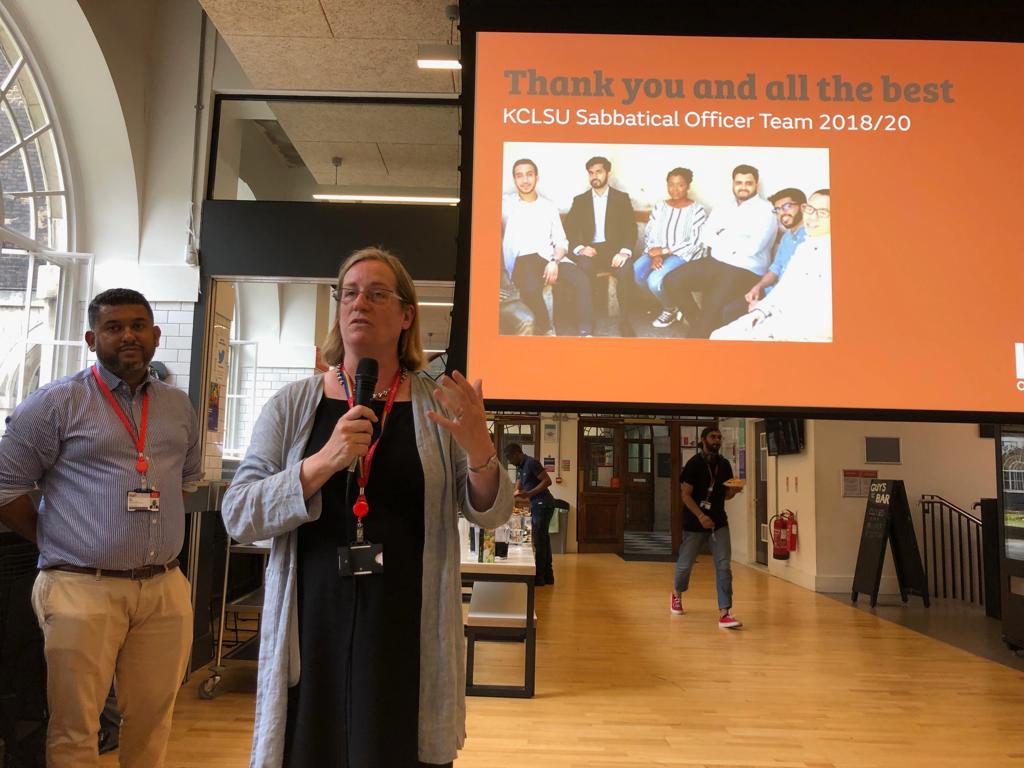Talah Anderson has joined the team as one of the new Diversity & Inclusion Project Interns. As part of their induction, we’ve asked them to write a blog post about something important to them.
It is an exciting time to join the Diversity & Inclusion team at King’s, given that the function is presently expanding in attempt to better combat structural inequality in the University and its faculties. In the light of its recent re-application to the Race Equality Charter Mark, King’s has identified four key obstacles to bringing about race equality across the University.
In this blog post, I intend to review these so-called “stubborn issues” and reflect on their significance, as well as restate, so as to witness, King’s’ action plan to bring about “an inclusive environment where all individuals are valued and able to succeed”, a fundamental tenet of King’s Strategic Vision 2029.
The first stubborn issue identified in the report is the extreme lack of ethnic diversity among King’s’ senior leaders. According to King’s self-assessment, just 8% of King’s professors belong to Black and Minority Ethnic (BME) groups – and only 0.6% of those UK BME professors are Black. These figures unfortunately do compare to national trends. Advance HE’s Equality in higher education: staff statistical report 2018 reveals that just 9.3% of UK professors are BME, while only 0.4% are Black. There is also an extreme lack of ethnic diversity among King’s’ senior professional services staff. Just 6.8% of King’s most senior professional services staff are BME, a figure only fractionally better than the national average of 4.5%.
The second stubborn issue identified in the report is the widespread perception among King’s students and staff that the University does not talk about race and racism or fails to do so with appropriate sensitivity. According to King’s’ self-assessment, a third of BME students and just under a third of BME staff feel they lack opportunities to discuss race at the University. On the occasions that these discussions have taken place, BME students and staff report being made to feel uncomfortable due to having been met with defensive and/or emotional reactions, which ultimately silence and undermine their experiences.
The third stubborn issue identified in the report is the prevalence of “microaggressions”; implicit forms of racism (whether conscious or unconscious) across King’s campuses. Microaggressions, e.g., a lecturer never making the effort to pronounce a student’s name correctly; a student claiming that they never “see” colour, convey hidden messages (e.g., disregard for “foreign” identities; denial of racism) and so signpost racist subtexts: that is, that BME students and staff do not belong at King’s. Microaggressions negatively impact King’s BME staff and student retention and, in turn, the University’s BME talent pipeline.
The fourth stubborn issue identified in the report is the attainment gap at King’s. Differential outcomes vary between faculties at the University, but BME students are 4% less likely to achieve a first or 2:1 than their white peers. Black students are significantly less likely to achieve a first-class degree than any other student group. Differential attainment then goes on to disadvantage BME students in postgraduate education and in the labour market. Indeed, as a result of the aforementioned structural inequalities, BME cohorts are less likely to enter graduate employment and continue on to postgraduate study when compared to their white peers.
Taking a broad view of these issues, it seems apt to stress their interconnectedness. Of course, an institution with few BME employees in senior management positions is less likely to be steered by the knowledge and experiences of BME people, making it less likely for discussions involving race and racism to be facilitated appropriately, if at all. If an institution fails to facilitate effective, open dialogue with its staff and students (where the institution’s primary role is to listen), institutional cultures that normalise microaggressions cannot be corrected and will instead be perpetuated, compromising King’s commitment to creating an “inclusive environment where all individuals are valued and able to succeed” as part of Vision 2029, in appreciation of, and yet still despite, race.
In response to these Stubborn Issues, King’s has developed a four-year strategic plan, which includes the following flagship actions:
- Establishing King’s first Race Equality Board to govern our progress towards race equity
- Conducting a comprehensive review of King’s staff recruitment and selection processes
- The creation of a ring-fenced fund to support the development and progression of BME talent
- Researching King’s history with race and racism – uncovering hidden and erased contributions of BME people to our institution and disciplines
- Detailed research and actions to identify, track, and respond to micro-aggressions at King’s

